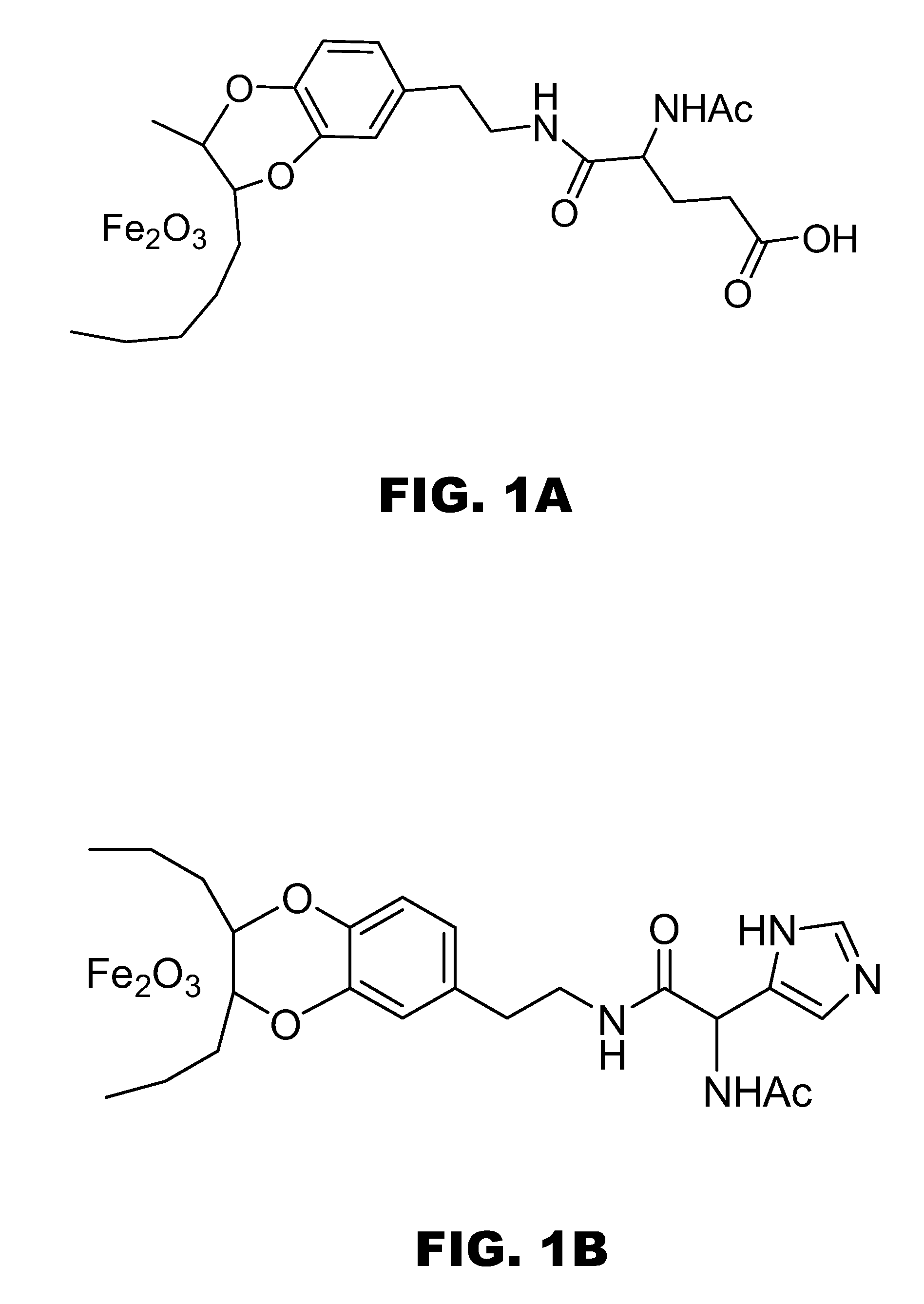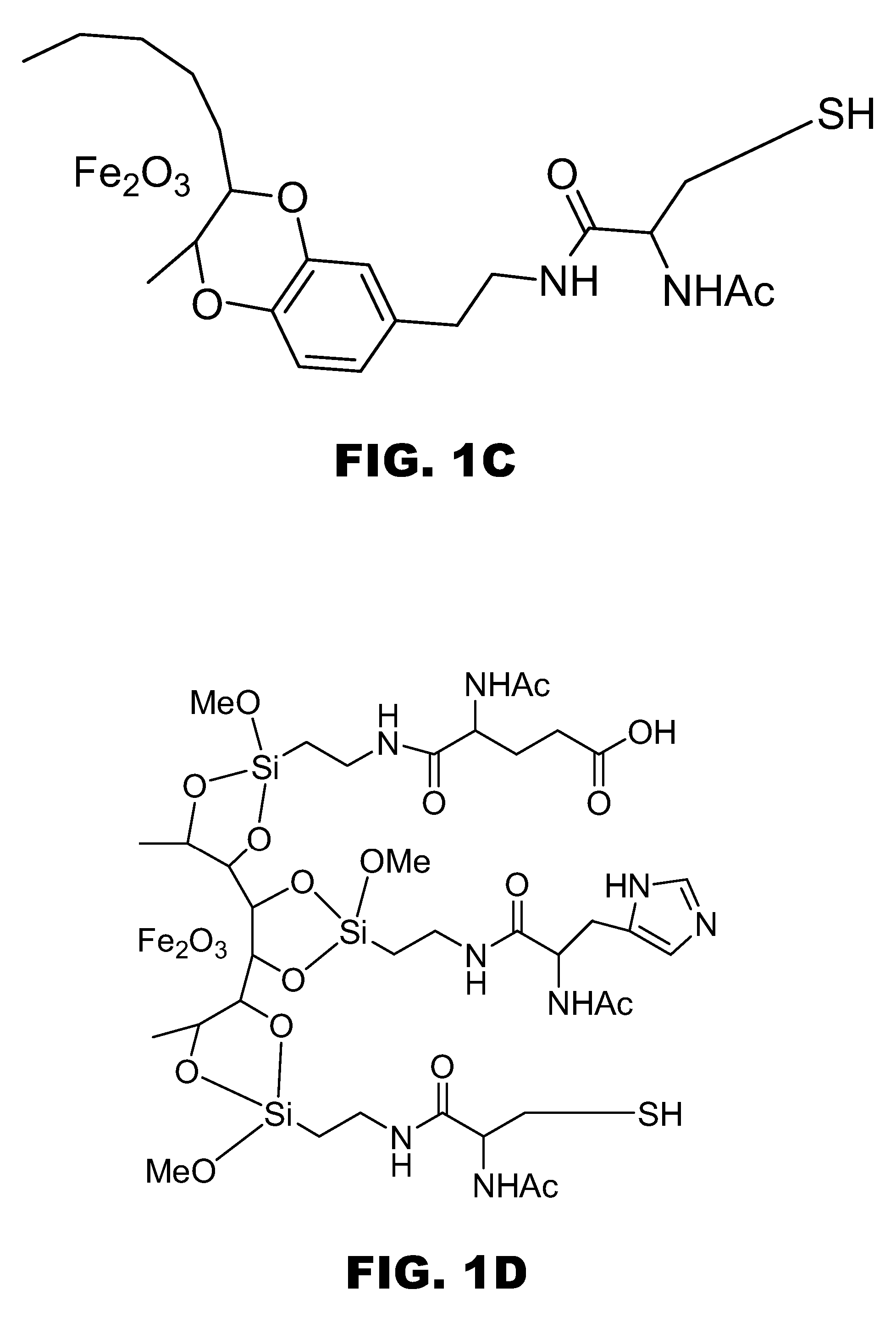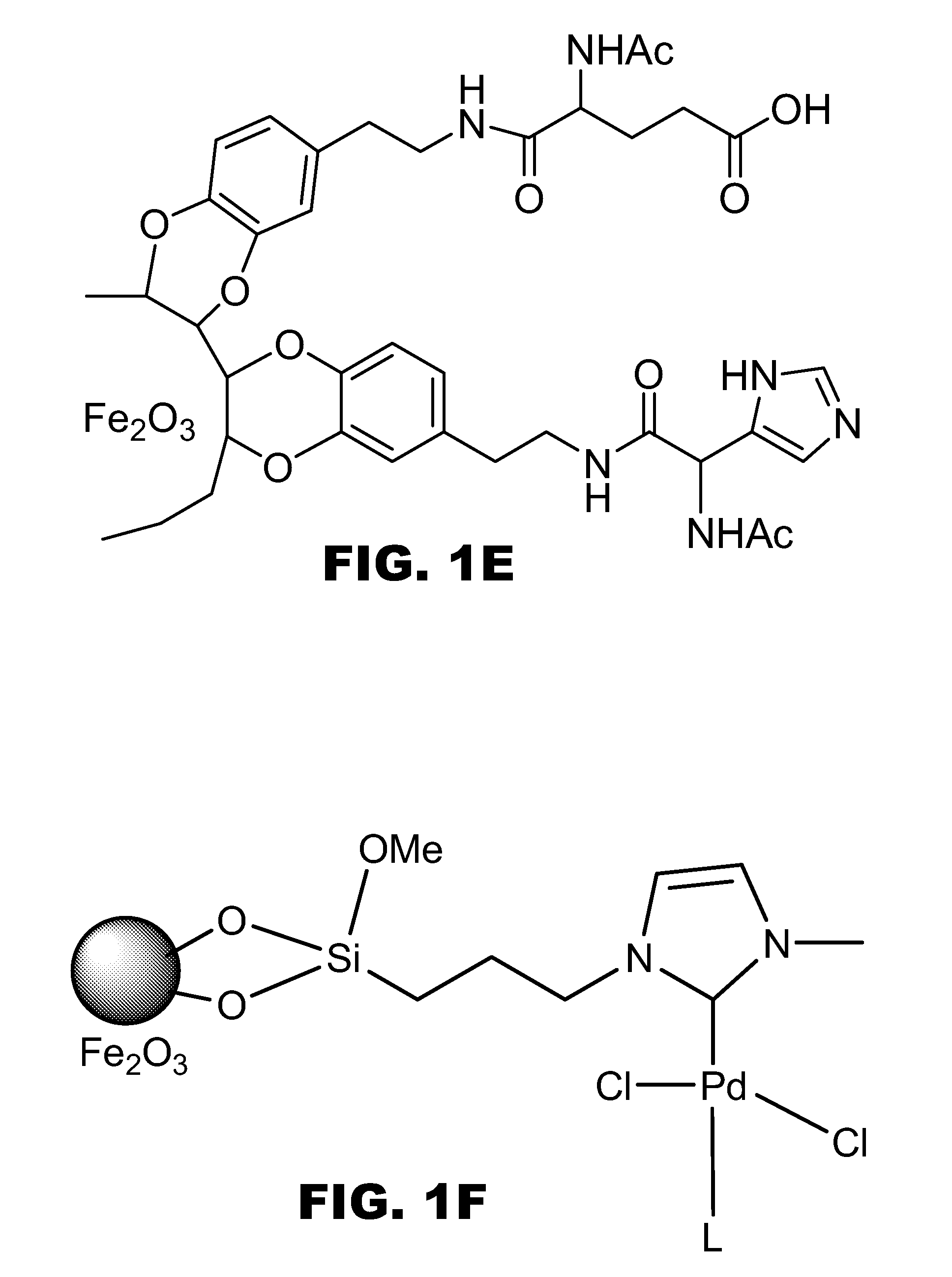Nano-reagents with cooperative catalysis and their uses in multiple phase reactions
a technology of nanoreagents and cooperative catalysis, which is applied in the direction of organic compounds/hydrides/coordination complexes, physical/chemical process catalysts, metal/metal-oxides/metal-hydroxide catalysts, etc., and can solve the problems of limited stability, high cost of many catalysts, and limited success of traditional recovery methods
- Summary
- Abstract
- Description
- Claims
- Application Information
AI Technical Summary
Benefits of technology
Problems solved by technology
Method used
Image
Examples
example 1
Synthesis of Iron Oxide Nanoparticle-Amino Acid Complexes.
[0073] Chemicals and organic solvents mentioned below were purchased from Aldrich (Milwaukee, Wis.) or Acros Organics (Pittsburgh, Pa.) and used as received. Water was obtained from a Milli-Q water system purchased from Millipore Corporation (Milford, Mass.). The heavy metal and bacterial contaminant levels in Milli-Q water were below 10 parts per billion. Permanent magnets were purchased from Dexter Magnetic Technologies Inc. (Elk Grove Village, Ill.).
[0074] To generate amino acid-linked nanocatalysts, amino acids with a carboxylate, a basic or a nucleophilic group on the side chain, such as Asp, Glu, His, and Lys, were attached to dopamine(4-(2-aminoethyl)benzene-1,2-diol) using standard procedures (Organic Letters 2006, 8, 3215). The a-amino groups of the amino acids were acylated to mimic the amide bonds of the enzyme backbones. Exchange-replacement reactions were conducted by mixing 0.06 mmol of an amino acid dopamine ...
example 2
Catalysis of Phosphoester, Carboxylic Ester, and Phosphodiester Bonds by Iron Oxide Nanoparticle-Amino Acid Complexes
[0075] The maghemite nanoparticle-amino acid complexes prepared in Example 1 were used to catalyze hydrolysis reactions using paraoxon(diethyl p-nitrophenylphosphate), 4-nitrophenyl acetate, an RNA construct (UpU), or a DNA construct (dApdT) as substrates (FIG. 3). The general procedure involved introducing a nanocomplex (amino acid concentration 0.06 mM) to a solution of substrate (0.5 mM) in 2 mL of Milli-Q water at 37° C. After 48 h, the nanocomplex was magnetically concentrated and removed from the solution (Org. Lett. 2006, 8, 3215). The solution was then subjected to HPLC analyses using an internal standard for the conversion yield of the substrate. The structures of the hydrolytic products were confirmed by LC-MS experiments. Each experiment was repeated at least two times.
[0076] The hydrolysis of the phosphoester bond of paraoxon (FIG. 3A) by the different n...
example 3
Synthesis of Iron Oxide Nanoparticle-Pd Complexes
[0079] To make the Pd-containing nanocomplexes, about 60 mg of 11-nm γ-Fe2O3 nanocrystals coated with oleate in 50 mL of chloroform was treated with (3-chloropropyl)trimethoxysilane (1 mL, 5.48 mmol). The resulting solution was then brought to reflux. After 12 h, the solution was cooled down to ambient temperature. Nanoparticles were magnetically concentrated by using an external permanent magnet and washed with toluene (2×50 mL), 0.1 M HCL (2×50 mL) and methanol (2×50 mL). The resulting nanoparticles were air-dried. Such nanoparticles were re-dissolved in 45 mL of dry toluene and then N-methylimidazole (0.75 mL, 9.41 mmol) in 5 mL of toluene was added. The resulting solution was brought to reflux and after 16 h, it was cooled down to room temperature. Nanoparticles were then magnetically concentrated and washed with toluene, HCI and methanol sequentially.
[0080] About 100 mg of the aforementioned magnetic nanoparticles were re-disso...
PUM
| Property | Measurement | Unit |
|---|---|---|
| temperature | aaaaa | aaaaa |
| temperature | aaaaa | aaaaa |
| average diameter | aaaaa | aaaaa |
Abstract
Description
Claims
Application Information
 Login to View More
Login to View More - R&D
- Intellectual Property
- Life Sciences
- Materials
- Tech Scout
- Unparalleled Data Quality
- Higher Quality Content
- 60% Fewer Hallucinations
Browse by: Latest US Patents, China's latest patents, Technical Efficacy Thesaurus, Application Domain, Technology Topic, Popular Technical Reports.
© 2025 PatSnap. All rights reserved.Legal|Privacy policy|Modern Slavery Act Transparency Statement|Sitemap|About US| Contact US: help@patsnap.com



